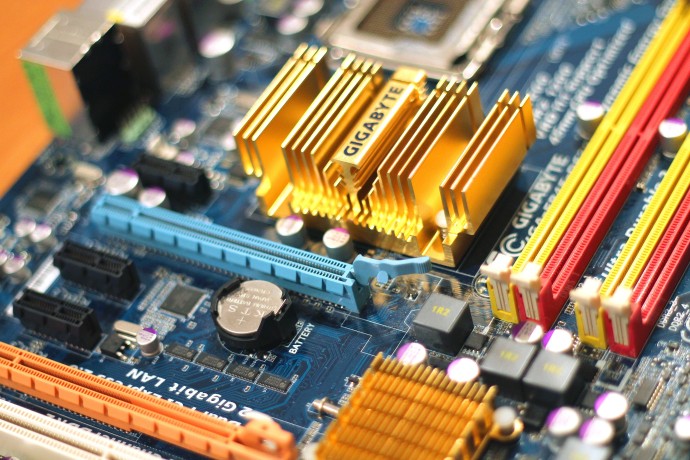With so many graphics cards on offer – from a variety of companies – to choose from, it can be difficult to know not only which one is best, but more importantly which one is best specifically for your computer and your gaming needs.

Image Source: Pexels
Companies
Despite the multitude of gaming hardware companies, one of the most prominent rivalries is largely agreed to exist between Nvidia and AMD (Advanced Micro Devices Inc.). Nvidia was founded 34 years ago, in 1993, by Jensen Huang, Chris Malachowsky and Curtis Priem. The company has partnered with numerous others over the years – such as SGS-Thompson in 1994 and TSMC in 1998 – as well as made many acquisitions (including Graphics Pioneer 3DFX and Media Q) – in order to deliver products at the cutting edge of the industry market. They were named America’s fastest growing company in 2002, while 2007 saw Nvidia being proclaimed by Forbes as company of the year. It was in 1999, however, that the company invented its first GPU, named the “GeForce 256”. In recent years, although Nvidia has begun to delve into the newest technological markets, such as Artificial Intelligence (AI) technology, the company still persist in making new models of graphics processing units.
Nvidia’s competitor AMD, on the other hand, was first established in 1969, with Jerry Sanders becoming the first president and CEO. The company started by making logic chips, then RAM chips in 1975, in 1985 was listed for the first time in the Fortune 500, then in 2006 merged with ATI Technologies. By 2016 we can see just how far the company has evolved, with their popular new CPU releases, acquisition of software company HiAlgo Inc. and development of a graphics card designed especially with VR users in mind.

Image Source: Pexels
Products
Each of these companies has, among their wide array of GPUs, some that are the most optimal for gaming computers.
The versions within the 10th GeForce series from Nvidia range massively in price, memory size, power, and just about every other key aspect that you can think of. While the GTX 1050 possesses CUDA cores at 640, memory size of 2GB, power of 75W and recommended PSU of 300W, the newest model, the GTX 1080 Ti has CUDA cores of 3584, memory size of 11GB, power of 250W and PSU of 600W. The newest model is based on the company’s Pascal architecture and is their flagship gaming GPU, with next-gen GDDR5X memory and 11 GB frame buffer. The price difference makes the earlier model, the GTX 1050, more affordable than the GTX 1080 Ti, the former coming in at upwards of $120.58, whereas the latter totals at $909.79.
Furthermore, professional eSports players have been known to use Nvidia’s graphics cards in their gaming PCs: an earlier model introduced by Nvidia in 2013, the GTX 780 Ti, was used by Team SoloMid’s sponsors, Origin PC. Additionally, teams competing in The International have, for the last four years, used Nvidia GPUs – this year, the GTX 1080 was the graphics processor of choice. It is no wonder, then, that there is speculation that one of Nvidia’s newest GPUs may be used by teams at the Epicenter tournament for video game CS:GO. With CS:GO betting sites predicting odds of 31/20 in the first half and 9/20 in the second between NRG vs Optic, Epicenter looks to be host to an interesting series of battles, concluding in October 2017, and the perfect opportunity for pro players who have not had the chance yet to test out a new GTX GPUs.
Meanwhile, AMD is pitching their Radeon RX 480 graphics card on the basis of its enhancement of VR graphics, and is their first model that is based on the company’s 14nm FinFET Polaris architecture. AMD pledges low-latency gaming and incorporates gating and clocking technologies. The graphics card boasts 150 board power, boost clock speeds of 1266 MHz and base clock speeds of 1120 MHz.
Nvidia’s GTX graphics card series may often be a little more expensive than AMD’s cards, yet many feel that the investment is worth it, in part for the fact that Nvidia’s cards naturally support their graphical technologies like Nvidia “HairWorks” (such as that used in The Witcher 3 on Geralt) and “Physx”.
Why Might You Need a New Graphics Card?
Graphics cards may age more rapidly than the other components within PCs, such as motherboards, cases, RAM and hard drive docks. Therefore, it may be the case that it is just the graphics card that requires replacement. Alternatively, graphics cards will also need to be purchased along with all the others if attempting to build an entire PC from scratch. In this scenario, there is far more freedom to almost build the PC around the graphics card if you so wish, instead of having to carefully ensure that the graphics card corresponds to specifications of the other components.
